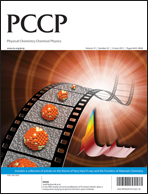Confirmation of disordered structure of ultrasmall CdSe nanoparticles from X-ray atomic pair distribution function analysis
Abstract
The atomic pair distribution function (PDF) analysis of

- This article is part of the themed collection: Hard X-rays and the Frontiers of Materials Chemistry

 Please wait while we load your content...
Please wait while we load your content...